EMS is an efficient way to train
brought about by sports science research.
Emeritus Professor of Kyoto University
Toshio Moritani, Ph.D
A driving force in the field of sports science, Dr. Toshio Moritani is the world’s leading authority on EMS research. For over 30 years his research has focused on the effects of EMS on muscle training. Through repeated verification tests, Dr. Moritani determined that the effective frequency for EMS training is 20Hz. Currently, the papers regarding this subject are the focus of researchers the world over.
EMS training makes it easy
to tone and firm the body.
Muscles are comprised of very thin muscular fibers and are majorly broken down into two types: fast- and slow-twitch muscles. Fast-twitch muscles are easy to develop and can lead to a well-shaped body. However, fast-twitch muscles cannot be stimulated without a highly intense training that is capable of leaving you out of breath. Since EMS can selectively approach fast-twitch muscles even with low intensity, muscular devel- opment is said to become more visible.
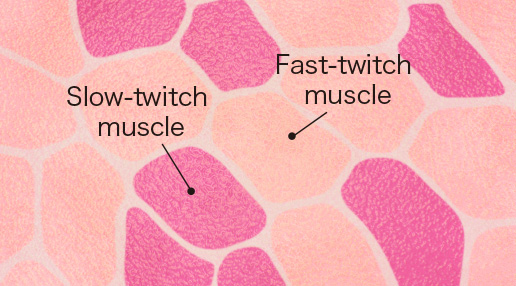
Cross-section view of muscle fiber
Proven training results at 20Hz
EMS devices currently on the market are set up to cover just about every frequency. Dr. Moritani has isolated this to a frequency that has proven to be most effective for training muscles. What is the ideal stimulation for exercising the muscles? Viewed from a sports science aspect, multiple frequencies were analyzed and compared with a particular focus on the muscle development mechanism.
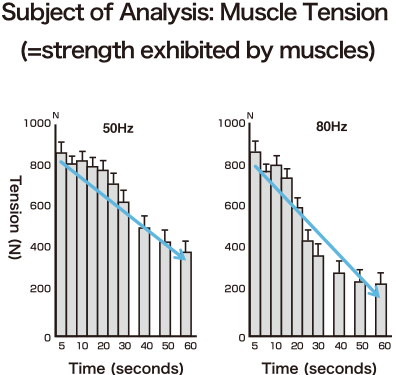
When frequencies exceeding 20Hz are applied for approximately 60 seconds, muscle tension declines. As a result, the necessary neuro- physiological conditions are not achieved and the expectations for any muscle training results become low.
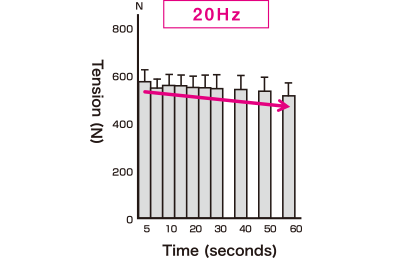
At 20Hz, the muscle tension is maintained over a prolonged period of time. Therefore, it was concluded that the frequency is effective for continuously training muscles.
Reference:
Moritani et al. Exp Neurol 88:471-483,1985
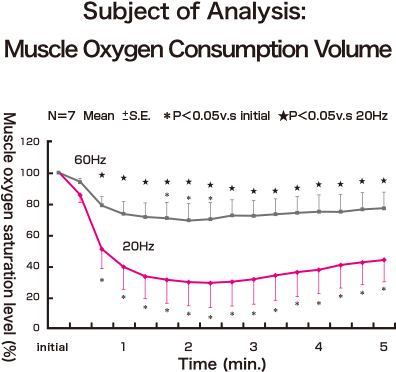
Comparison muscle oxygen consumption at 20Hz and 60Hz
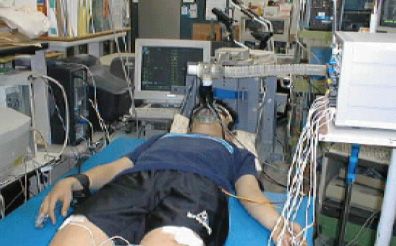
Photo: Verification testing (Moritani Laboratory)
When exercised, the muscles use energy and consume oxygen. Compared to other frequencies, 20Hz has proven to result in higher oxygen consumption and more effective training results.
Data provided by Dr. Toshio Moritani, Kyoto University
The Prospective Future of EMS Research
It can be said that EMS research has leaped forward with the discovery that effective muscle training requires stimulation that conforms to the muscle mechanism. It is believed that the effectiveness of EMS will continue to increase and will be adopted by many as a common method of training.
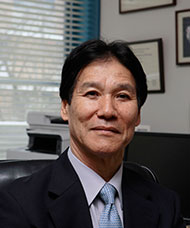
- Emeritus Professor of Kyoto University
- Toshio Moritani, Ph.D.
- 1950 Born in Hyogo Prefecture.
- 1980 Completed doctoral studies at USC.
- 1992 Graduate School Associate Professor, Graduate School of Human and Environmental Studies, Kyoto University.
- 2000 Professor of the same graduate school.
- April 2016 Emeritus Professor of Kyoto University, Director of Exercise and Medical Science Research Center co.,Ltd.
Successively held posts as chairman or councillor of various academic societies such as the International Society for Electrophysiology and Kinesiology, the International Society of Biomechanics, The American College of Sports Medicine, the Japan Society of Exercise and Sports Physiology, and the Japan Society of Physical Fitness and Sports Medicine. First in the world to evaluate the level of neurological contribution to increased muscle strength. Published more than 200 papers. Holds many copyrights.

